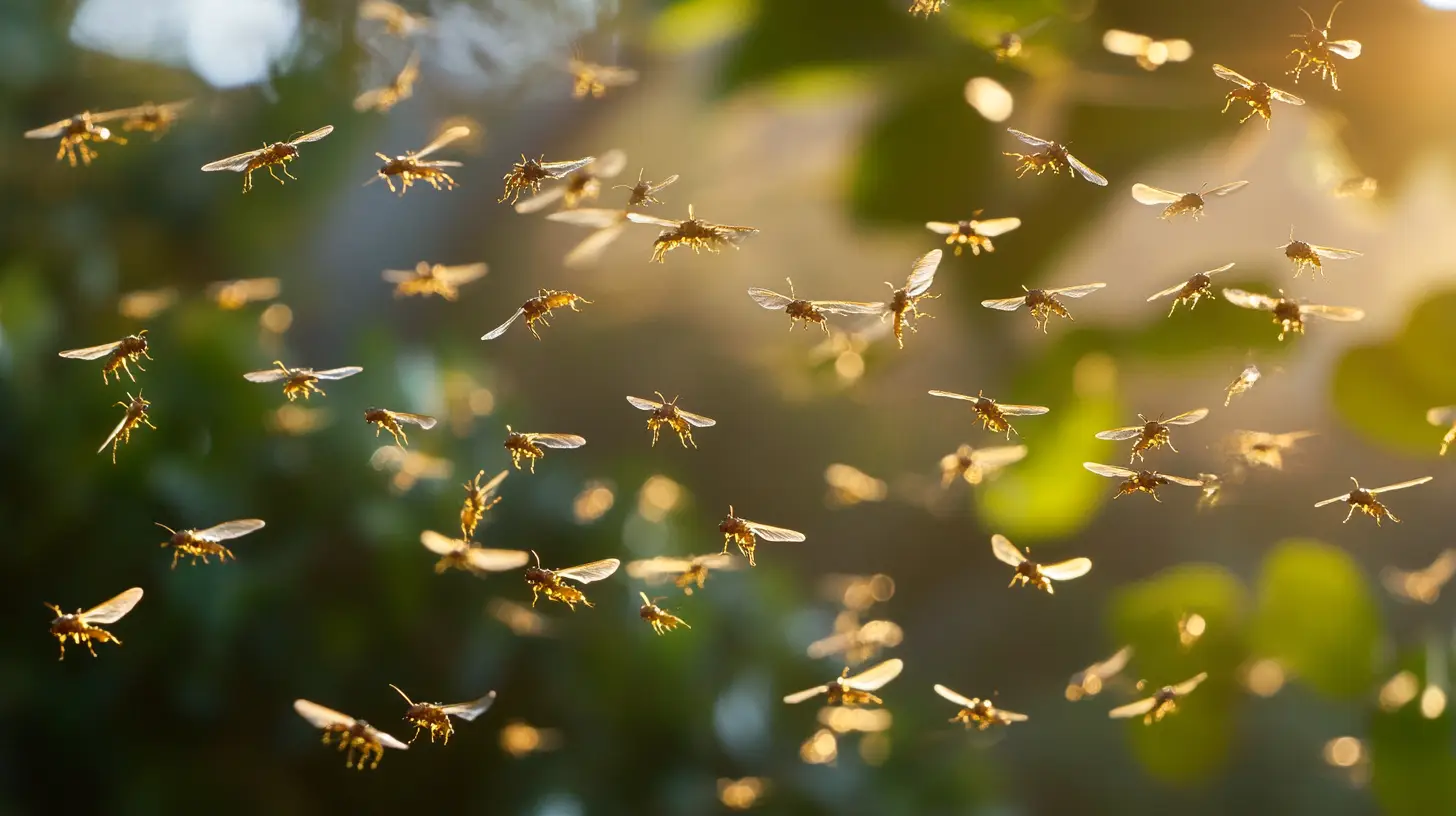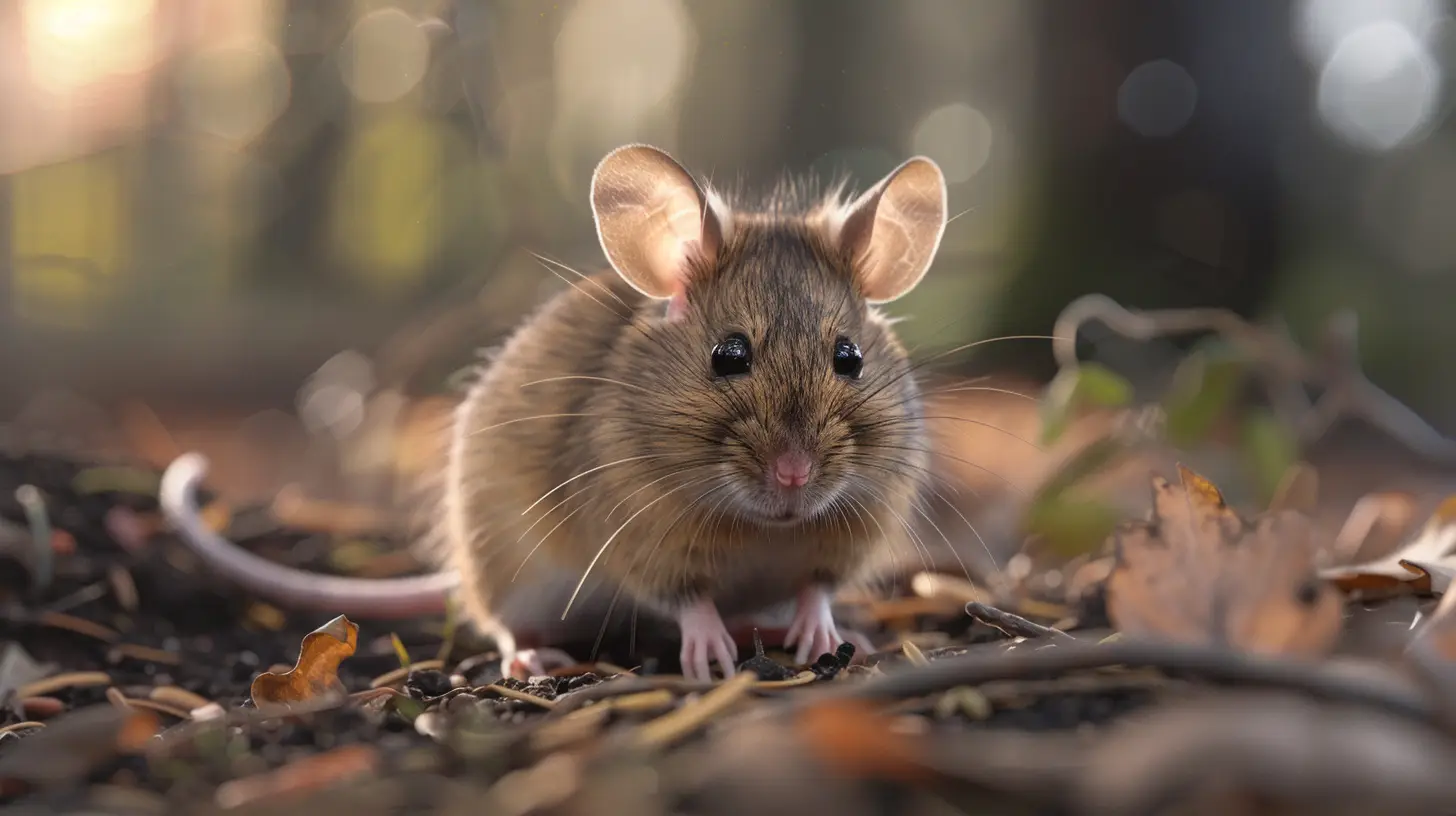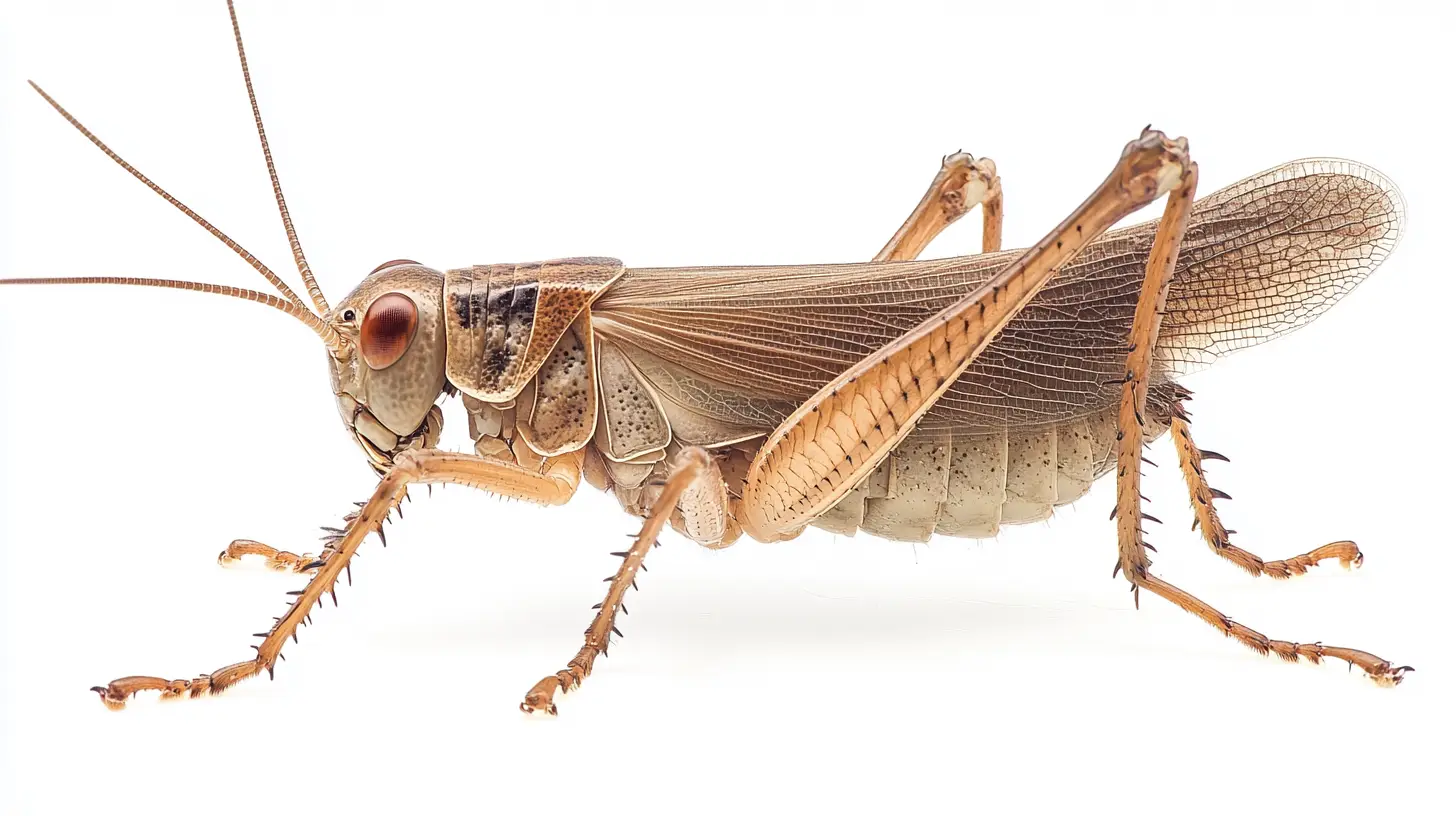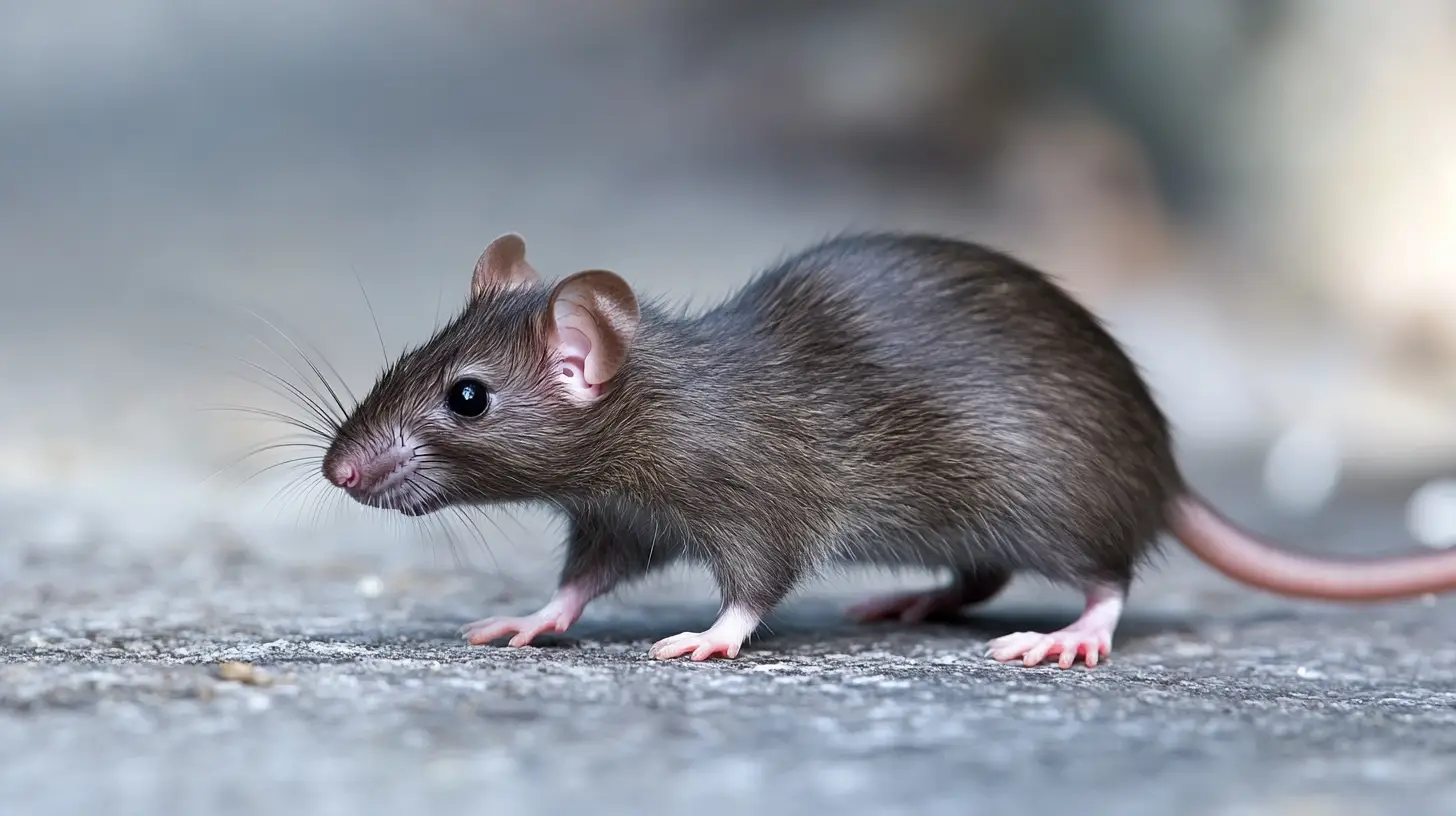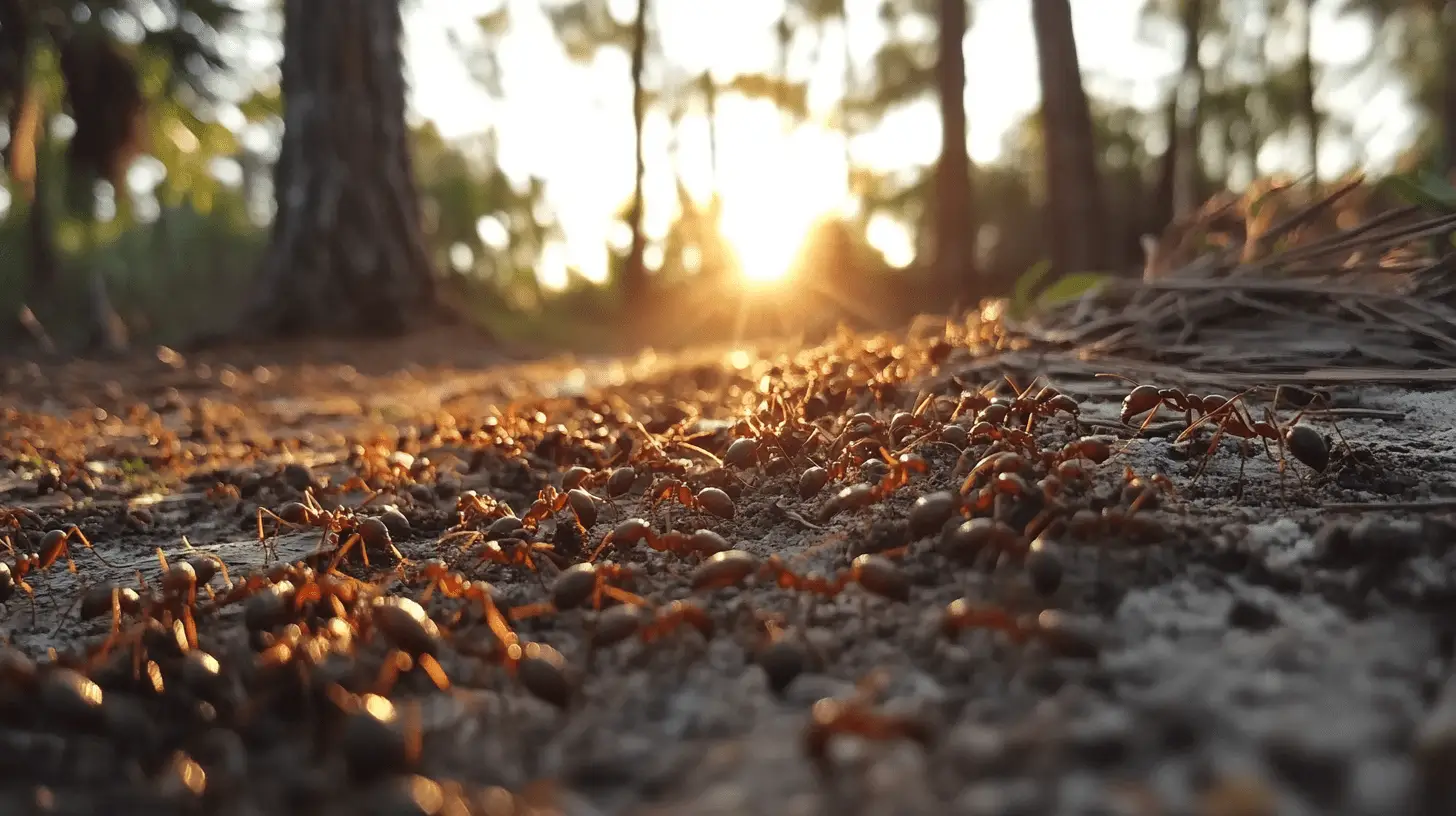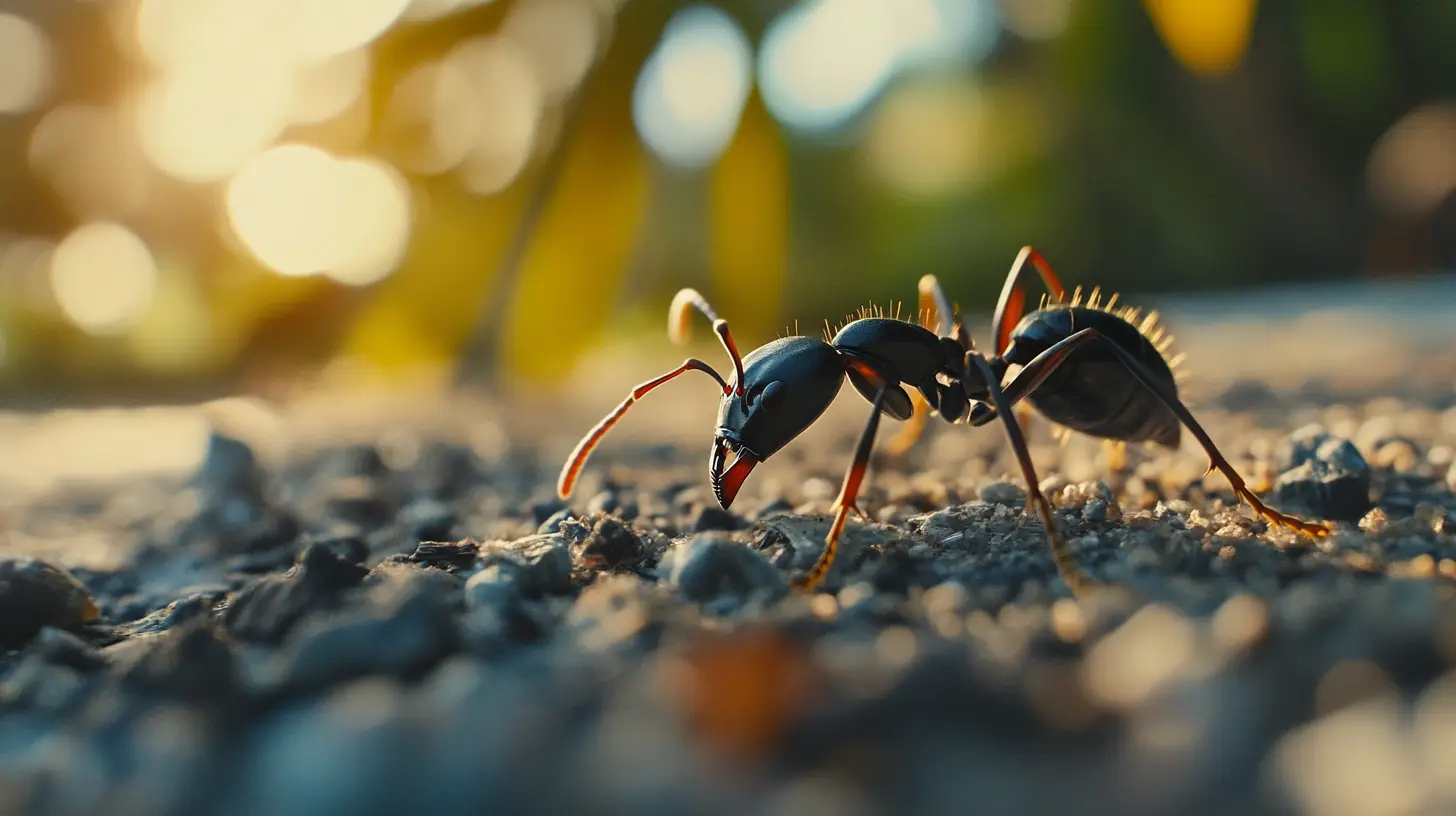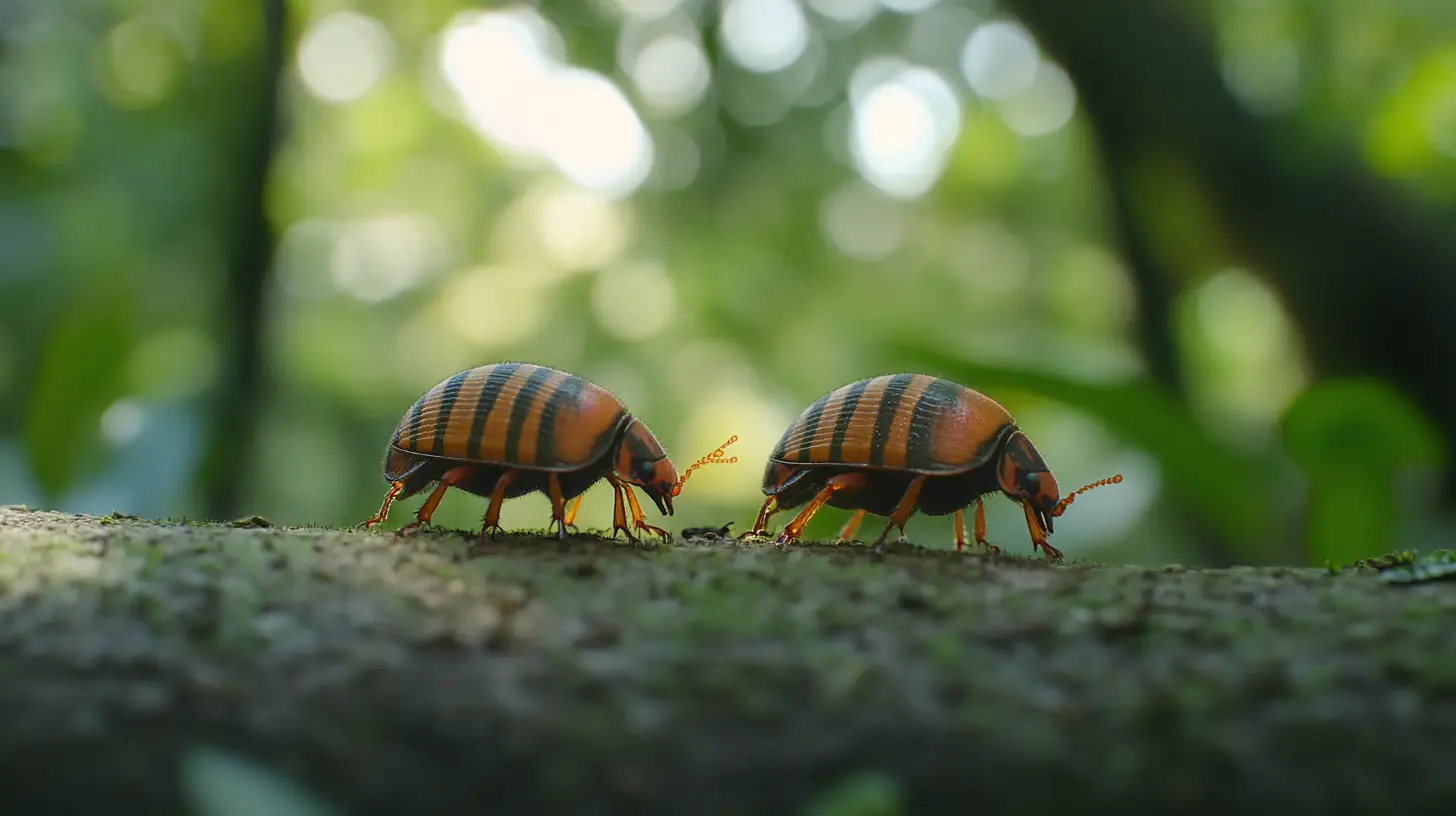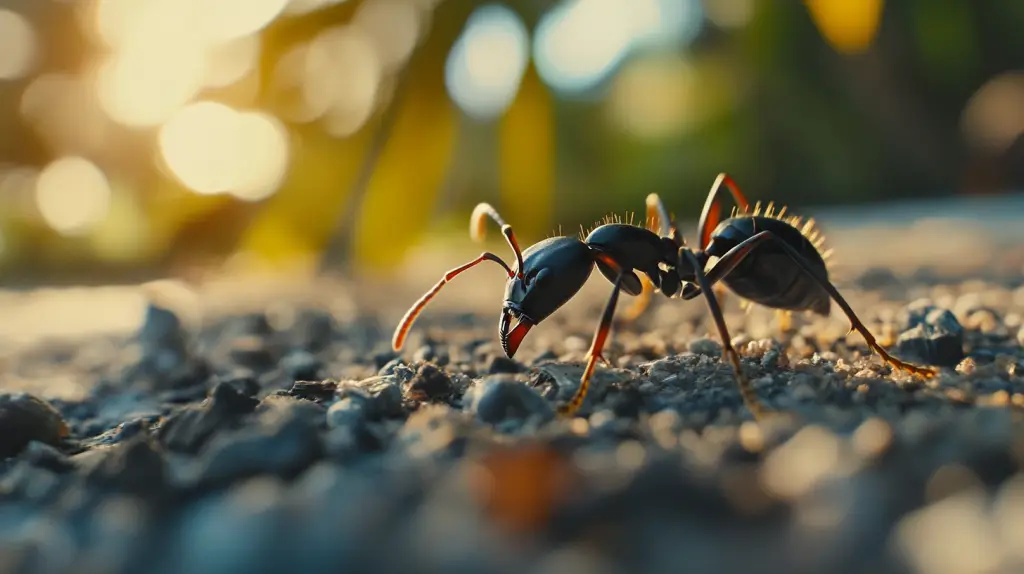
Table of Contents
Dealing with an ant invasion can be a frustrating experience for homeowners. If you’re searching for effective ways to get rid of ants in your Lakewood Ranch home, you’re not alone. Florida’s warm climate creates an ideal environment for nearly 20 different ant species, making them a common pest in residential areas. From the notorious Red Imported Fire Ants, known for their painful stings, to the elusive Ghost Ants that sneak into kitchens in search of sweets, understanding the diversity and behavior of these tiny intruders is key to effective control.
Ants are fascinating creatures with complex social structures and varied nesting habits. For instance, unlike termites, Florida’s carpenter ants don’t consume wood but excavate it to create nests, preferring damp or decayed areas around your home. This behavior can lead to structural damage if left unchecked. The challenge in controlling these pests often lies in their reproductive methods; species like Pharaoh and Ghost Ants spread through “budding,” where a new colony forms when a queen and workers break away from the original nest. This can make complete eradication difficult without the right approach.
In this post, we’ll dive into expert insights and practical tips on how to manage and eliminate ants from your home. By understanding their unique traits—like the swarming season triggered by spring rains or the night-time foraging habits of carpenter ants—you’ll be better equipped to tackle infestations effectively. Let’s explore how to reclaim your space from these persistent pests!
Key Takeaways for Effective Ant Control in Lakewood Ranch
- Identify the Ant Species: Knowing the type of ant (carpenter, fire, ghost, or Argentine) can help tailor your control methods effectively.
- Natural Remedies Work for Mild Infestations: Options like vinegar, diatomaceous earth, peppermint oil, and borax bait are safe and effective for minor infestations or as preventive measures.
- Preventive Measures are Essential: Sealing entry points, storing food properly, and maintaining a clean environment are crucial steps in preventing ants from returning.
- Outdoor Solutions Help Manage Larger Colonies: Methods like boiling water and essential oils effectively treat outdoor nests.
- Professional Help for Severe Infestations: For large or persistent infestations or for species that pose structural or health risks, consulting a pest control professional ensures thorough and effective treatment.
What are Ants?
Ants are eusocial insects in the family Formicidae, living in organized colonies. They communicate via pheromones, have diverse diets, and play vital ecological roles. Ants undergo complete metamorphosis and exhibit remarkable problem-solving skills, making them fascinating members of the insect world.
Understanding the Complexity of Ants
Ants are more than just tiny creatures crawling around our homes; they’re fascinating, complex insects that belong to the family Formicidae. Their highly organized social structure and unique behaviors have made them one of the most studied insect groups. Living in eusocial colonies, ants exhibit a well-defined caste system that includes workers, soldiers, and reproductive individuals, each with specialized roles to support the colony’s survival and efficiency.
Communication and Survival
Ants communicate using pheromones or chemical signals, allowing them to convey critical information about food sources, threats, and colony activities. This effective communication system keeps the colony coordinated, with workers following pheromone trails to food and potential nesting sites. Their ability to work together and solve problems collectively has even led to remarkable behaviors like forming living bridges or rafts.
Diverse Species and Diet
With over 13,800 species classified globally, ants have adapted to almost every environment on earth, from tropical forests to urban areas. Their diets are equally diverse; while some are herbivores feeding on nectar and seeds, others are omnivores or carnivores, preying on insects and even cultivating fungi. This diversity in diet and habitat explains why different ant species require varied approaches for effective control.
Nesting, Lifespan, and Reproduction
Ants build nests in various locations—underground, in wood, or even within plant structures. Some species create elaborate mounds, while others occupy existing spaces in trees and buildings. The lifespan of ants varies significantly, with worker ants living several months to years and queens potentially surviving for decades. Their reproductive process includes nuptial flights, where winged males and females mate mid-air before the fertilized females establish new colonies, creating potential infestation points.
Ecological Role and Defense Mechanisms
While ants are often unwanted guests in homes, they play essential roles in ecosystems by aerating soil, decomposing organic material, and serving as food for various animals. However, some ant species, like the Red Imported Fire Ant, are invasive and can cause significant ecological and economic damage. These ants, among others, have developed defense mechanisms like stinging and biting, which can threaten humans and pets if their nests are disturbed.
Ants: Complex, Fascinating Insects with Essential Roles
Ants are more than just common insects; they’re part of the diverse family Formicidae and exhibit incredibly complex behaviors and social structures that make them an essential part of our ecosystems. Living in highly organized eusocial colonies, ants demonstrate a unique caste system that includes workers, soldiers, and reproductive members, each with distinct roles to keep their colonies thriving. Colonies can vary greatly in size, ranging from a few dozen to millions of individuals, depending on the species.
Communication and Coordination
Ants rely heavily on pheromones—chemical signals that allow them to share information about food, threats, and other activities within the colony. This remarkable communication system enables ants to coordinate complex behaviors like foraging, nest maintenance, and defense, making them highly effective in achieving colony-wide goals.
Species Diversity and Dietary Needs
With over 13,800 classified ant species worldwide, ants are found in almost every environment, each with unique characteristics and dietary needs. Some ants are herbivores feeding on nectar and seeds, while others are omnivores or carnivores, often feeding on insects or cultivating fungi as a food source. This dietary flexibility allows ants to adapt and thrive across diverse ecosystems.
Lifespan, Reproduction, and Nesting
Ants’ lifespan varies greatly based on caste; while workers may live only a few months, queens can live for decades under optimal conditions. During nuptial flights, winged males and females leave their colonies to mate, with fertilized females eventually establishing new nests. These nests can be found in soil, wood, or plant structures, with some species even creating complex mounds or underground tunnels.
Ecological Impact and Defense Mechanisms
Ants play an integral role in ecosystems, aiding in soil aeration and decomposition and serving as a food source for various animals. However, some species, like the invasive Red Imported Fire Ant, are known to cause ecological and economic harm. Many ant species also exhibit unique defense mechanisms such as stinging or biting, to protect their colonies from threats.
Intelligence, Problem-Solving, and Cultural Significance
Ants are recognized for their intelligence and problem-solving abilities. They work together to accomplish challenging tasks, like forming bridges or rafts to navigate obstacles. Due to their social complexity and cooperative behaviors, ants have been a topic of interest in human culture and scientific research for centuries.
These fascinating characteristics highlight the ecological importance and intricate behaviors of ants, showcasing why these small insects have captivated human interest for so long.
Common Ant Species in Lakewood Ranch, Florida
- Florida Carpenter Ants: Large ants (up to 0.5 inches) that nest in decayed wood, trees, and shrubs. They are known to bite when threatened.
- Red Imported Fire Ants: Aggressive ants that can sting painfully. They create dome-shaped mounds and are known for their reddish bodies with copper-colored heads.
- Bigheaded Ants: Recognizable by their large heads compared to other workers. They create dirt mounds and are omnivorous, feeding on sweets and insects.
- Rover Ants: Small (1.5-2 mm) dark brown or black ants that nest in mulch or under debris. They are attracted to moisture and can invade kitchens and bathrooms.
- Ghost Ants: Tiny (1.5-2 mm) ants that are pale in color and prefer nesting in moist areas like bathrooms and kitchens.
- Pharaoh Ants: Small, yellowish ants that are notorious for infesting homes and can be difficult to control due to their budding reproduction method.
- Argentine Ants: Brown, small ants that form large colonies and are known for displacing other ant species.
- Crazy Ants: Known for their erratic movement, these ants are small and dark-colored, feeding on sugars and proteins.
- Acrobat Ants: Recognizable by their heart-shaped abdomen, which they raise when disturbed. They nest in wood and are attracted to honeydew from aphids.
- Tawny Crazy Ants: Similar to crazy ants but with a tawny color; they can form supercolonies and are known for their aggressive foraging behavior.
- Thief Ants: Small yellowish-brown ants that often invade homes in search of food and can be mistaken for Pharaoh ants.
- Pyramid Ants: Medium-sized ants with a distinctive pyramid-shaped structure on their thorax; they prefer sandy soils.
- White-Footed Ants: Small black ants with white feet that typically nest in trees but can invade homes in search of food.
- Small Honey Ants: These ants have a sweet taste due to the honeydew they collect; they often nest in soil or under rocks.
- Velvet Ants (Cow Killers): Actually a type of wasp, these brightly colored insects are known for their painful sting but are often mistakenly referred to as ants.
These ant species vary in behavior, nesting habits, and potential impact on homes, making it essential for homeowners to identify them accurately for effective control measures.
Identifying Florida Carpenter Ants – Key Characteristics
Florida Carpenter Ants are among the larger ant species found in Florida, and their distinctive appearance and behaviors can help you identify them. These ants are primarily known for their preference for damp or decaying wood, where they excavate galleries to establish their nests rather than consuming wood like termites. Here are the key features to look for:
Size and Color
- Workers range from 6 to 12 mm (about 1/4 to 1/2 inch) in length, while queens can be much larger, reaching up to 17 mm (3/4 inch).
- Typically, they are black or reddish-black, with a head and thorax ranging from ash brown to rusty orange. Their abdomen (gaster) is distinctly black.
Physical Characteristics
- Florida Carpenter Ants have a segmented body with a pinched waist and elbowed antennae, typical of ant morphology.
- A notable feature is their evenly convex thorax, which is key to distinguishing carpenter ants from other species.
- Their abdomen has a circular ring of hair at the end, known as an acidopore, and their antennae are 12-segmented with no club.
- You’ll also notice long, coarse, brown to golden erect hairs on their legs and antennal scapes, adding to their distinctive appearance.
Distinctive Features and Behavior
- Short hairs around the anal opening and the rounded thorax profile are characteristic features of Florida Carpenter Ants.
- These ants are primarily nocturnal and forage at night. While they don’t sting, they can bite and spray formic acid if threatened.
- They’re attracted to damp and decaying wood, commonly found in tree stumps, branches, and sometimes within the wooden structures of homes.
Signs of Infestation
If you suspect a Florida Carpenter Ant infestation, look for signs such as:
- Wood shavings or “frass” near potential nesting sites, as they carve out wood but do not eat it.
- Rustling or scratching sounds within walls or wooden areas indicate movement inside.
- Large, black ants appearing indoors, especially around dusk or night, may point to a nearby nest.
Distribution
Florida Carpenter Ants are found across the state, from the Panhandle to the Keys, and are common in other southeastern states, extending as far as North Carolina, Mississippi, and Louisiana.
By familiarizing yourself with these identifying characteristics, you’ll be better equipped to recognize Florida Carpenter Ants and take appropriate action to address infestations.
Identifying Florida Carpenter Ants
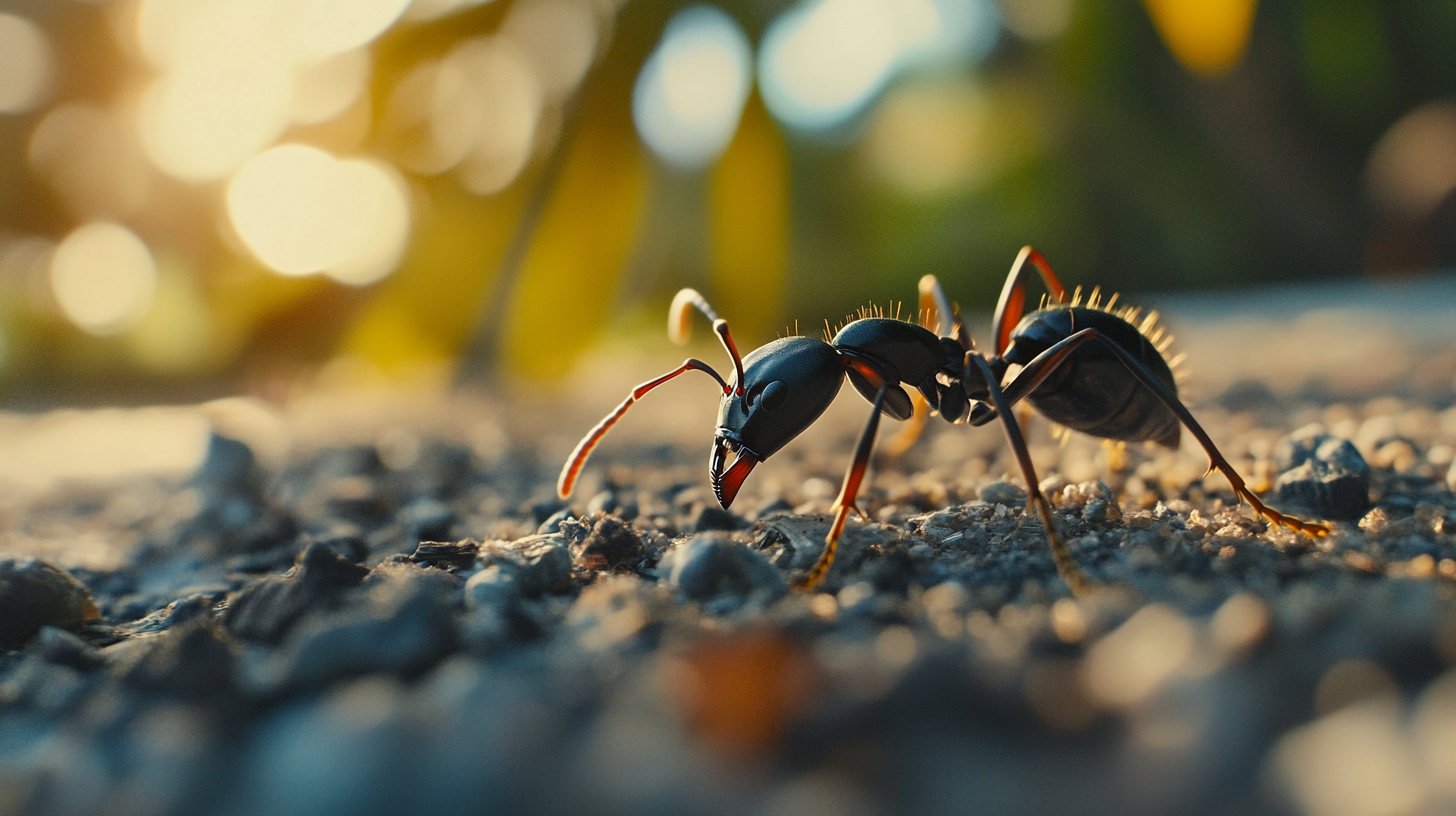
1. Size
Workers range from 6 to 12 mm (1/4 to 1/2 inch) in length. Queens can be larger, up to 17 mm (3/4 inch) long.
2. Color
Typically black or reddish-black, with heads and thoraxes being ash brown to rusty-orange, and a black gaster (abdomen).
3. Physical Characteristics
- Segmented bodies with pinched waists.
- Elbowed antennae.
- Evenly convex thorax, a key characteristic of carpenter ants.
- Circular ring of hair at the end of the abdomen (acidopore).
- 12-segmented antennae with no club.
- Numerous long, coarse brown to golden erect hairs on legs and antennal scapes.
4. Distinctive Features
Short hairs around the anal opening and a rounded profile of the thorax.
5. Behavior
Primarily nocturnal foragers that do not sting but can bite and spray formic acid. They are attracted to damp and decaying wood and are often found in tree stumps, branches, and wooden structures.
6. Signs of Infestation
- Presence of wood shavings or “frass” near infested areas.
- Rustling or scratching sounds within walls or woodwork.
- Sightings of large black ants indoors.
7. Distribution
Florida Carpenter Ants are found throughout Florida, from the Panhandle to the Keys, and are also present in other southeastern states up to North Carolina and west to Mississippi and Louisiana.
By looking for these characteristics, you can identify Florida Carpenter Ants and distinguish them from other ant species in the area.
Identifying Red Imported Fire Ants (RIFA): Key Traits and Behaviors
The Red Imported Fire Ant (RIFA) is an invasive species in the United States, particularly prevalent in Florida. Known for its aggressive behavior and painful sting, this ant is a significant pest, especially in open and sunny areas like lawns, parks, and pastures. Here are the key characteristics to help identify these ants:
Size and Color
- Workers vary in size, ranging from 2.4 to 6 mm (1/8 to 1/4 inch) in length, making them polymorphic, meaning they appear in different shapes and sizes.
- These ants are typically dark reddish-brown to reddish-black, often with a black gaster (abdomen).
Physical Characteristics
- Red Imported Fire Ants have a two-segmented pedicel, or “waist,” a distinctive feature for identification.
- Their mandibles are equipped with four distinct teeth, and they have a 10-segmented antenna ending in a two-segmented club.
- Unlike some native fire ants, RIFA do not have disproportionately large, square-shaped heads.
- A stinger is present at the tip of their gaster, which they use to deliver their painful sting.
Distinctive Mound and Nesting Characteristics
- RIFA mounds can reach up to 18 inches in diameter and may rise as high as 2 feet in open areas.
- The mounds have no visible entrance holes on top, differentiating them from other types of ant nests.
- They prefer open, sunny areas but can also be found nesting around buildings, near concrete, or even in electrical equipment.
Behavior and Aggression
- Known for their aggressive response, RIFA will swarm and sting when their mound is disturbed, often crawling up the legs of intruders before stinging in unison.
- Their stings cause a burning sensation and commonly result in a white pustule that forms the next day, a hallmark of fire ant stings.
Colony Structure and Habitat Preferences
- A single colony can contain up to 500,000 workers and may be polygyne (multiple queens) or monogyne (single queen).
- These ants favor open spaces and thrive in lawns, parks, cultivated fields, and other sunny environments.
Due to the Red Imported Fire Ant’s aggressive behavior and the health risks posed by its sting, it’s advisable to contact a professional pest control service if you suspect an infestation. Identifying these characteristics can help protect your home and property from these formidable pests.
Identifying Red Imported Fire Ants (RIFA)
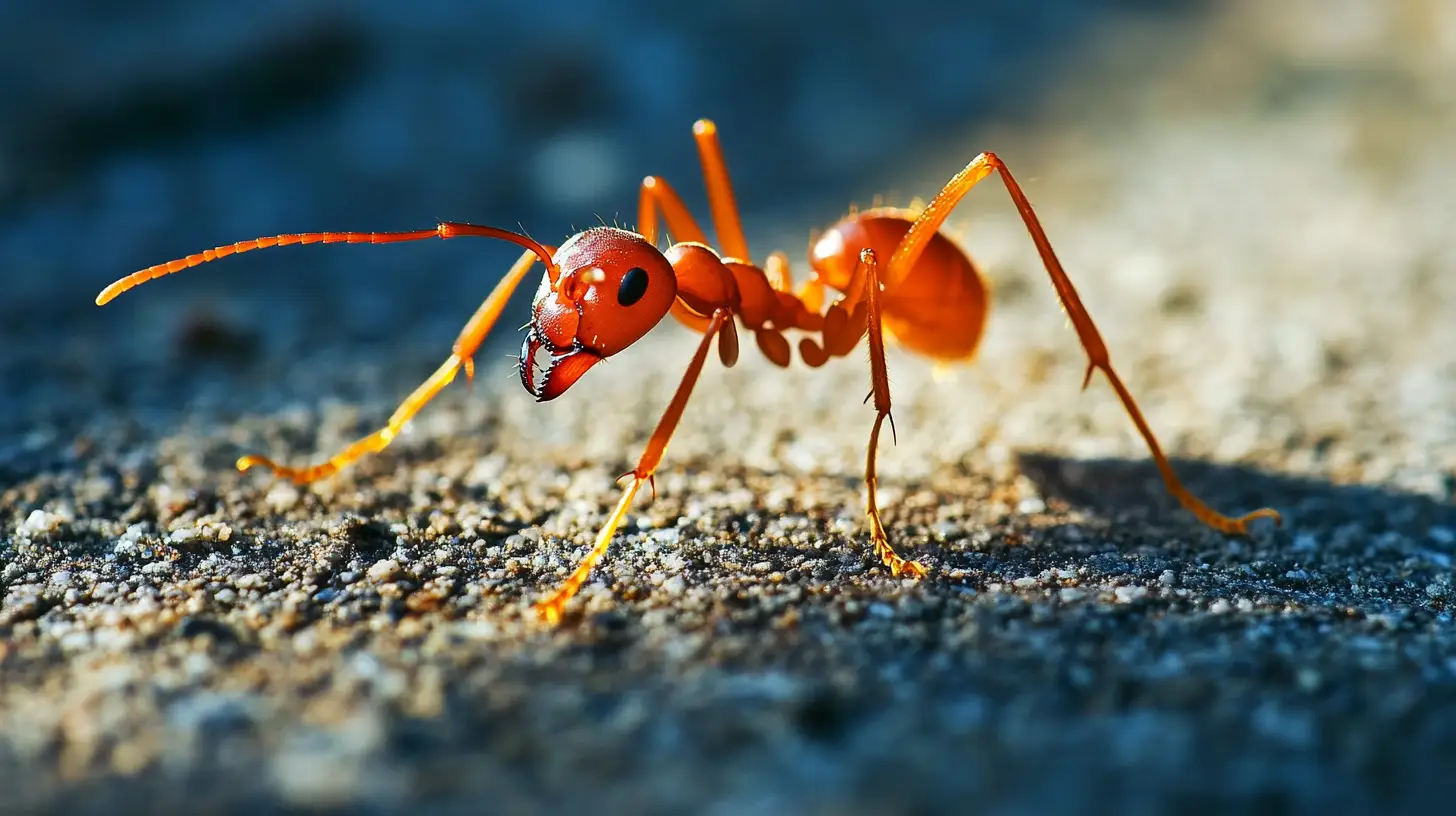
1. Size
Workers range from 2.4 to 6 mm (1/8 to 1/4 inch) in length. Polymorphic, meaning workers appear in different shapes and sizes.
2. Color
Dark reddish-brown to reddish-black, with some descriptions mentioning a black gaster (abdomen).
3. Physical Characteristics
- Two-segmented pedicel (“waist”).
- Four distinct teeth on the mandible.
- 10-segmented antennae, ending in a two-segmented club.
- Stinger present at the tip of the gaster.
- Workers have six legs.
4. Distinctive Features
No disproportionately large, square-shaped heads (unlike native fire ants). Reproductive males and females (alates) have wings.
5. Mound Characteristics
Soil mounds can be up to 18 inches (46 cm) in diameter and as high as 2 feet in open, sunny areas. There are no visible entrance holes on top of the mound.
6. Behavior
Aggressive when disturbed, emerging to bite and sting intruders. Stings cause a burning sensation and often result in a white pustule the next day. They can attack in unison, crawling up the legs of victims.
7. Habitat Preferences
Prefer open, sunny areas like pastures, parks, lawns, and cultivated fields. They can nest in or under buildings, around electrical equipment, and near concrete structures.
8. Colony Structure
Colonies can contain up to 500,000 workers and may be polygyne (multiple queens) or monogyne (single queen).
By looking for these characteristics, you can identify Red Imported Fire Ants and distinguish them from other ant species. However, due to their aggressive nature and potential health risks, it’s advisable to contact a professional pest control service if you suspect an infestation.
Effective Ways to Get Rid of Ants in Lakewood Ranch, Florida
Ant infestations are a common issue in Lakewood Ranch due to the region’s warm, humid climate. Fortunately, there are several effective methods to eliminate these pests from your home, ranging from natural solutions to professional help.
Natural Repellents for Ant Control
Starting with natural repellents, vinegar, lemon juice, and peppermint oil can work wonders when sprayed along ant trails and entry points. For instance, a simple mixture of equal parts white vinegar and water, or lemon juice diluted with water, can disrupt ant trails, while the strong scent of peppermint oil keeps them at bay. Additionally, spreading used coffee grounds around entry points can further deter ants due to their aversion to the scent.
Using Diatomaceous Earth for Long-Lasting Results
Food-grade diatomaceous earth is another powerful, chemical-free solution. Safe for humans and pets, this powder dehydrates ants upon contact. Sprinkle it along trails and reapply if the area gets wet or is cleaned.
Effective Methods to Get Rid of Ants in Lakewood Ranch, Florida
- Natural Repellents:
- Vinegar solution: Mix equal parts white vinegar and water in a spray bottle.
- Lemon juice: Combine one part lemon juice with three parts water.
- Peppermint oil: Mix 10-20 drops with 2 cups of water in a spray bottle.
- Coffee grounds: Spread used coffee grounds around entry points.
- Food-Grade Diatomaceous Earth:
- Sprinkle along ant trails and near entry points.
- Reapply after cleaning or if it becomes wet.
- Boric Acid or Borax Baits:
- Mix 1/2 cup sugar with 1 1/2 tablespoons of Borax and warm water.
- Place the paste on cardboard pieces near ant activity.
- Keep away from pets and children.
- Cinnamon:
- Sprinkle ground cinnamon or place cinnamon sticks in infested areas.
- Soap and Water:
- Mix dish soap with water in a spray bottle.
- Spray directly on ants and their trails.
- Baking Soda and Powdered Sugar:
- Mix equal parts and place near ant trails.
- Boiling Water:
- Pour directly into visible ant nests, especially for outdoor infestations.
- Essential Oils:
- Use tea tree, cedar, or citrus oils mixed with water as sprays.
- Preventive Measures:
- Seal entry points around windows, doors, and foundations.
- Keep food in airtight containers.
- Clean up spills and crumbs promptly.
- Trim vegetation away from your home’s exterior.
- Professional Pest Control:
- If natural methods fail or for severe infestations, consider hiring a local pest control service familiar with Lakewood Ranch’s specific ant species.
Remember, the effectiveness of these methods may vary depending on the type of ants you’re dealing with. For persistent or large infestations, it’s best to consult with a professional pest control service in Lakewood Ranch for targeted treatment.
Boric Acid and Borax Baits
For a more targeted approach, boric acid or borax baits mixed with sugar can effectively attract and eliminate ants; the ants carry the bait back to their colony, spreading it throughout. Just be cautious to place these baits out of reach of children and pets.
Other Natural Ant Deterrents
Cinnamon, whether ground or in stick form, is another natural deterrent, as its scent disrupts ant pheromone trails, discouraging them from coming near. A simple soap and water solution is also effective for spot treatment; when sprayed directly on ants, it kills them and erases their scent trails. Baking soda mixed with powdered sugar can further help. Attracted by the sugar, ants ingest the baking soda, proving fatal.
Outdoor Solutions: Boiling Water and Essential Oils
For outdoor infestations, pouring boiling water directly into visible nests can kill ants at the source, particularly for mounds near the lawn or home exterior. When diluted with water and sprayed near windows, doors, and cracks, essential oils like tea tree, cedar, or citrus oils can also act as a natural barrier, repelling ants from entering your home.
Preventive Measures to Keep Ants Out
Preventive measures are essential to keep ants away in the long term. Start by sealing entry points around windows, doors, and foundations with caulk to prevent ants from gaining easy access. Storing food in airtight containers, promptly cleaning up spills and crumbs, and trimming trees and shrubs away from your home can also help.
When to Call Professional Pest Control
If natural methods don’t fully resolve the problem or you’re dealing with a severe infestation, professional pest control can provide targeted, effective solutions for Lakewood Ranch’s unique ant species.
These approaches offer a comprehensive guide for managing and reducing ant activity, combining effective natural methods with preventive practices and professional assistance for lasting ant control.
FAQ: How to Get Rid of Ants in Lakewood Ranch
What are the most common types of ants in Lakewood Ranch?
In Lakewood Ranch, you’ll likely encounter carpenters, fire, ghosts, and Argentine ants. Carpenter ants can damage wood structures, fire ants are known for painful stings, ghost ants are tiny and frequently invade kitchens, and Argentine ants form large, persistent colonies. Identifying the ant type can help you choose the best treatment method.
What natural remedies work best for ant control?
Natural remedies like vinegar, lemon juice, peppermint oil, diatomaceous earth, and cinnamon are effective for repelling ants. Vinegar and lemon juice can be mixed with water and sprayed along trails, while peppermint oil and cinnamon disrupt their scent trails. Diatomaceous earth is a powerful natural substance that kills ants by dehydrating them upon contact. These remedies are effective for mild infestations or as preventive measures but may not eliminate larger infestations entirely.
How does diatomaceous earth work, and is it safe?
Food-grade diatomaceous earth is a fine powder made from fossilized algae that is safe for humans and pets but lethal to ants and other small pests. When ants contact the powder, it damages their exoskeleton, causing them to dehydrate and die. Sprinkle it along entry points and reapply as needed, especially if it becomes wet or disturbed. Make sure to use food-grade diatomaceous earth, as industrial-grade varieties may contain additives.
Can boric acid and borax be used to kill ants?
Yes, boric acid and borax are highly effective in ant control when mixed with a sugar solution or paste. The sugar attracts the ants, consuming the boric acid or borax and bringing it back to the colony. This mixture poisons the ants slowly, ensuring it reaches other colony members. However, boric acid and borax should be kept away from children and pets, as they can be harmful if ingested.
What are the signs of an ant infestation in the home?
Signs of an ant infestation include seeing large numbers of ants in certain areas, finding trails that lead to food or water sources, and discovering small piles of wood shavings or “frass” (in the case of carpenter ants) near wooden structures. You may also notice ant mounds around your yard, indicating outdoor nests, especially if you spot fire ant mounds without visible entrance holes on top.
Why do ants keep returning after I clean them up?
Ants are drawn to food sources and water. Even small crumbs, spills, or accessible food items can attract them. Additionally, ants leave behind pheromone trails that other ants follow. If these trails aren’t thoroughly cleaned, ants may keep returning. To effectively stop them, clean surfaces with a solution like vinegar and water to break down the scent trails, store food in airtight containers, and regularly take out the trash.
Are essential oils effective for ant control?
Yes, essential oils like peppermint, tea tree, cedar, and citrus oils are effective at repelling ants. When mixed with water and sprayed along windows, doors, and entry points, these oils disrupt the ants’ pheromone trails and create an unpleasant environment for them. Essential oils are safe to use around the home, although they should be diluted to prevent skin irritation and kept out of reach of pets and children.
What are preventive measures to avoid future ant infestations?
To prevent future ant infestations, seal all potential entry points around doors, windows, and foundations with caulk. Store food in airtight containers, clean up spills and crumbs promptly, and ensure pet food is not left out overnight. Keep trees, bushes, and other vegetation trimmed back from your home, as ants often use plants as pathways. Regularly inspect outdoor areas, as finding and treating ant nests early can prevent ants from moving indoors.
Is boiling water a safe method for outdoor ant control?
Pouring boiling water into ant mounds is a safe, chemical-free way to kill ants at the source, particularly for outdoor infestations. This method is effective for small mounds, but larger or deeper nests may require multiple treatments. Take care to pour the boiling water slowly to prevent splashes, and use this method only in areas away from plants you wish to keep, as it can damage nearby vegetation.
When should I consider professional pest control for ants?
Professional pest control is recommended when natural and DIY methods fail to resolve the infestation, or if you’re dealing with a large or persistent problem. Some ant species, like carpenter ants or fire ants, can cause structural damage or pose health risks, so professional treatment can be beneficial in these cases. Pest control specialists can provide targeted treatments, often using safer and more effective methods than those available to homeowners.
How do pest control professionals typically handle ant infestations?
Professional pest control companies typically begin with an inspection to identify the ant species and locate the colony. They may use a combination of baits, sprays, or dust treatments, specifically targeting ants while minimizing exposure to non-target areas. In cases of large outdoor colonies, they might treat with environmentally-safe pesticides or bait stations to manage the colony effectively.
Can ants cause damage to my home?
Yes, certain ant species, like carpenter ants, can cause structural damage by excavating wood to create nesting galleries. While they don’t eat wood like termites, their tunneling can weaken wooden structures over time.

